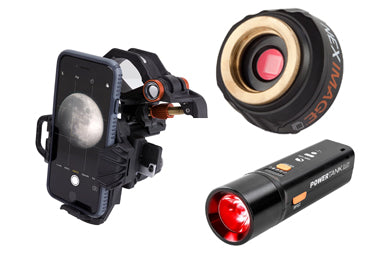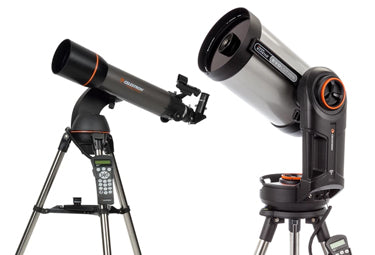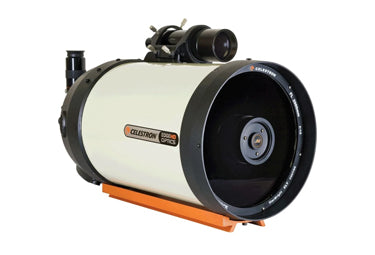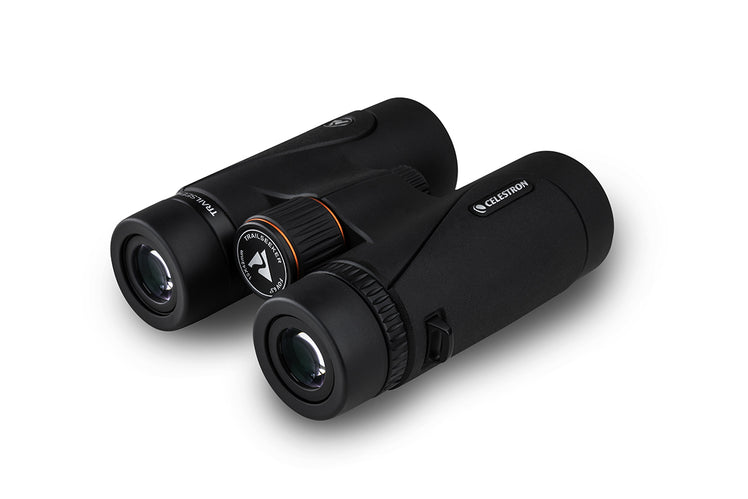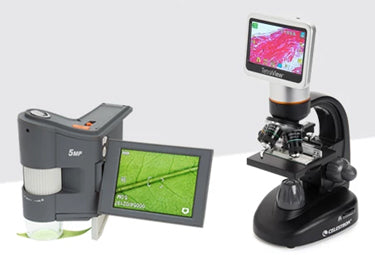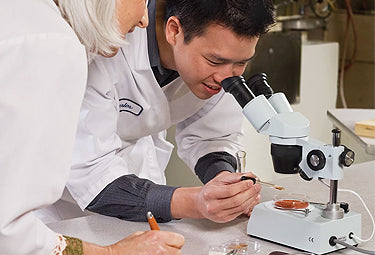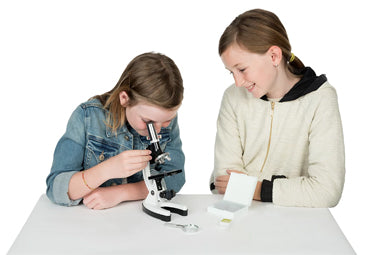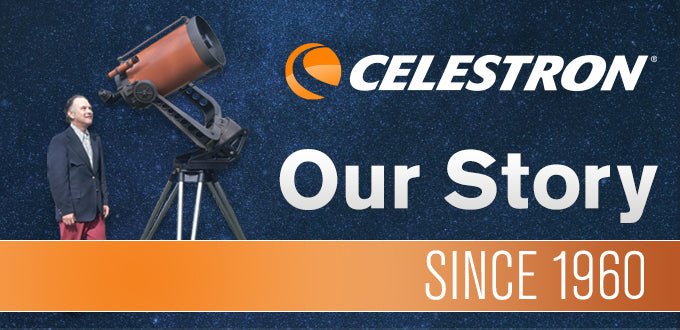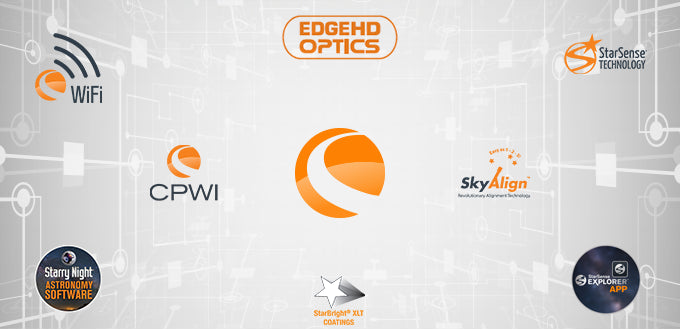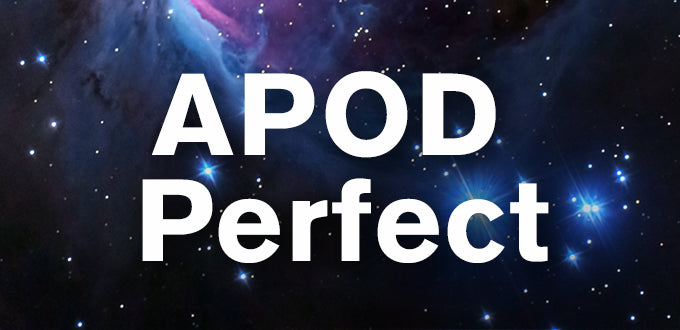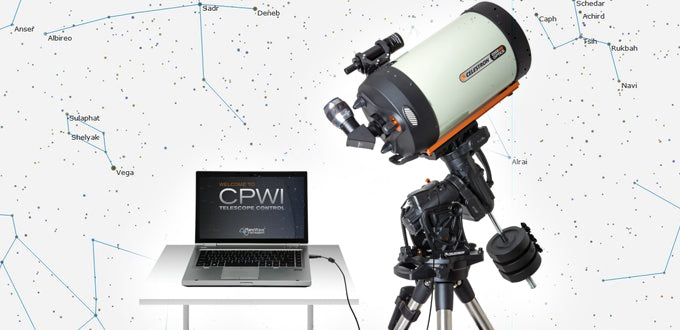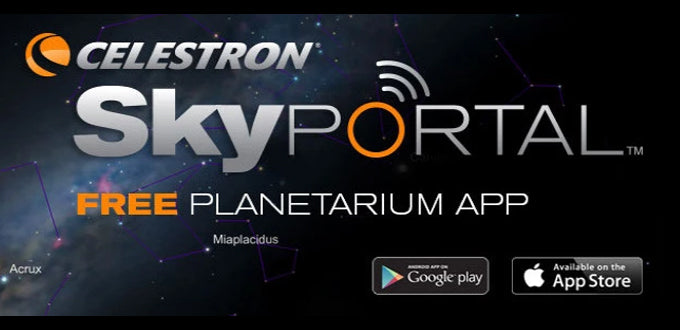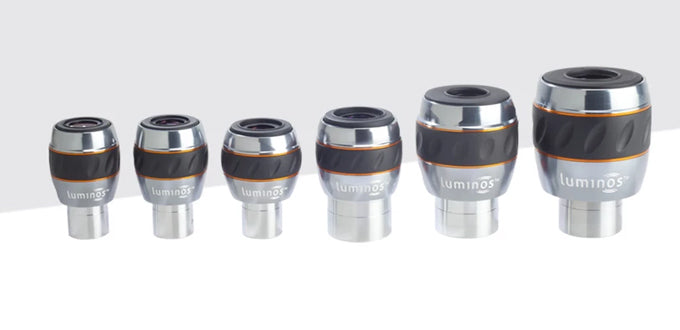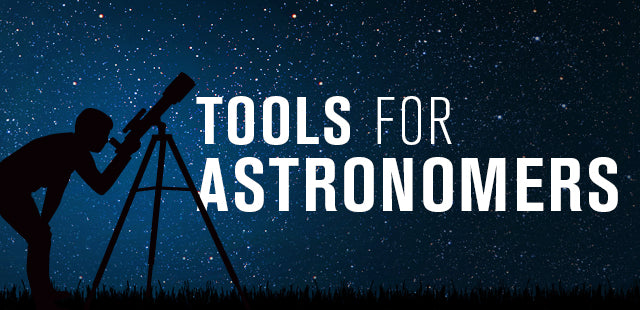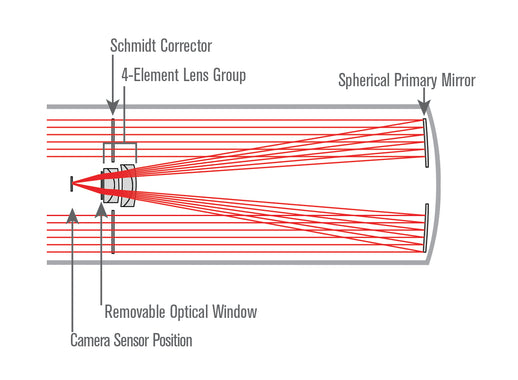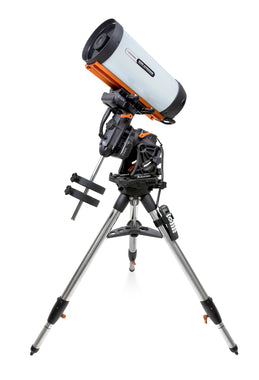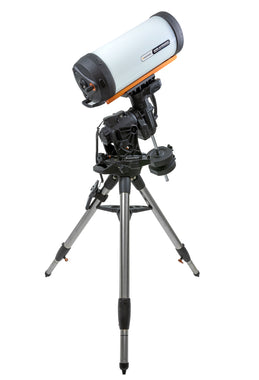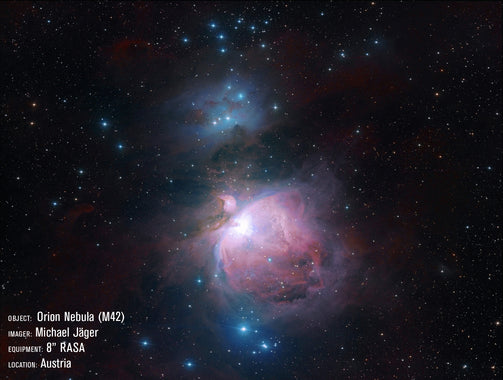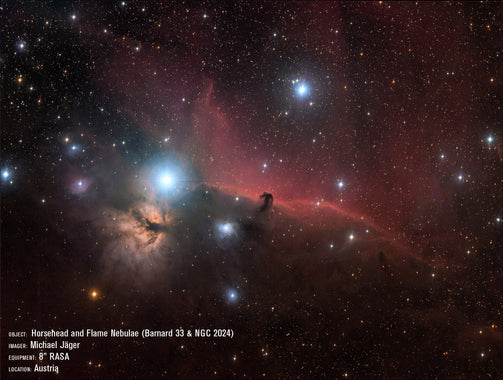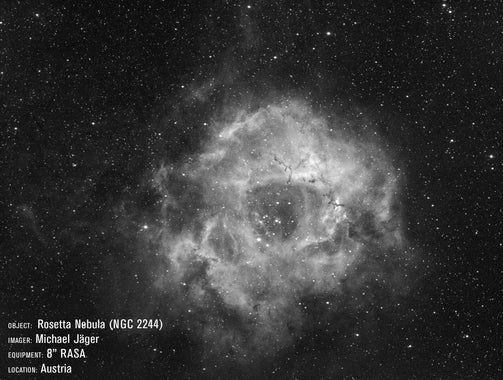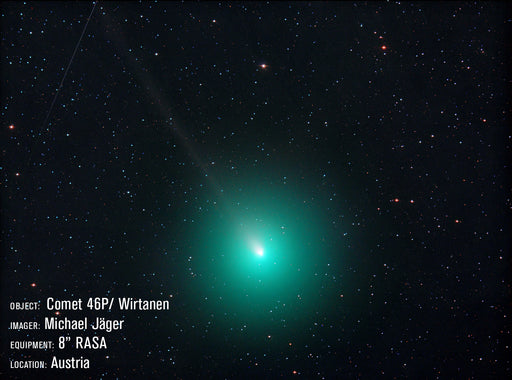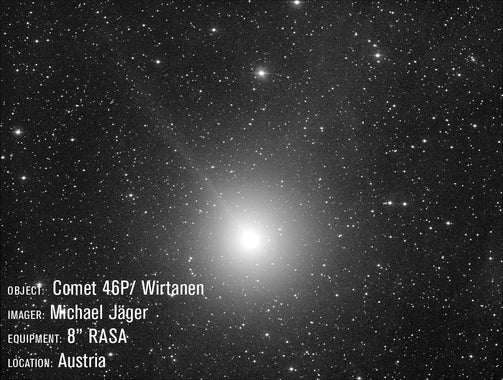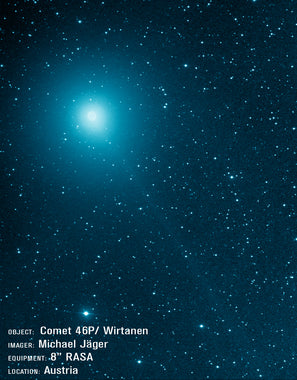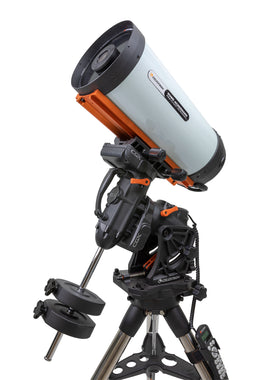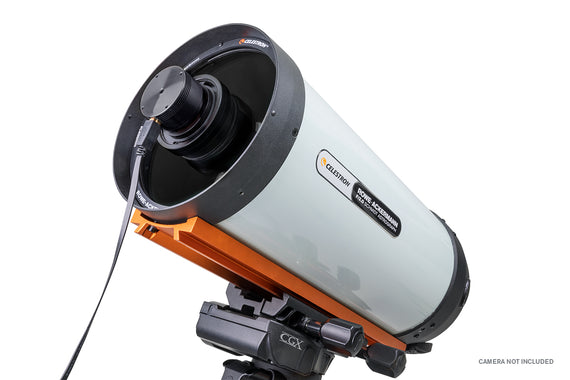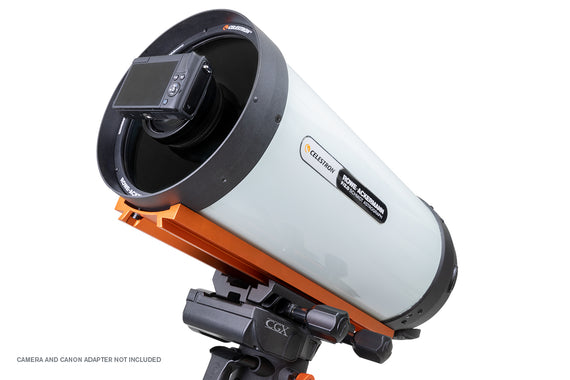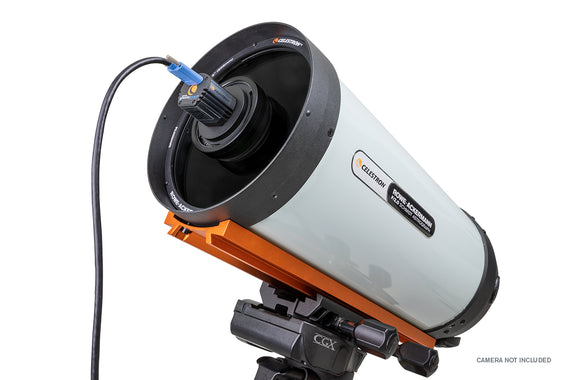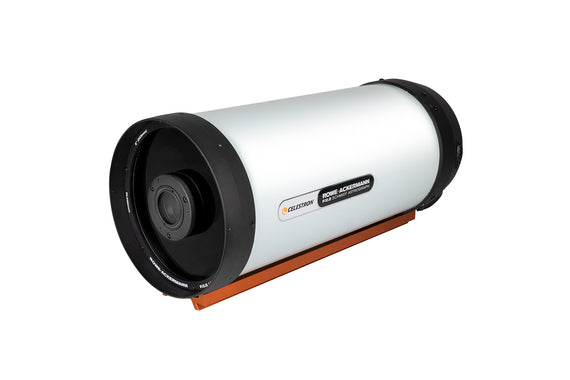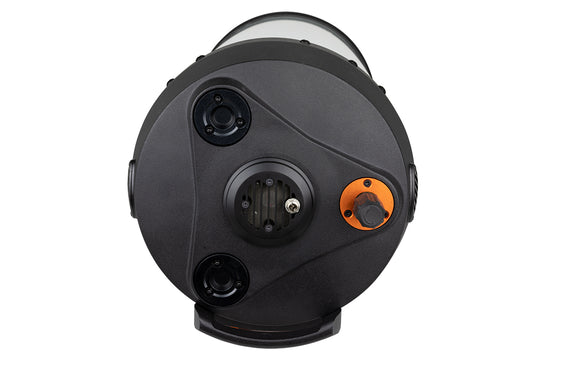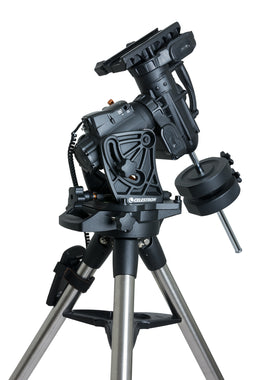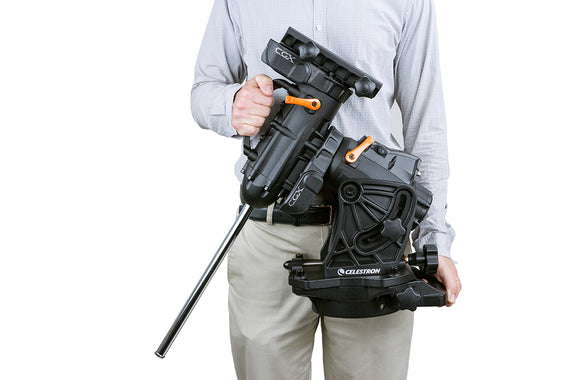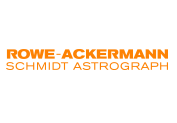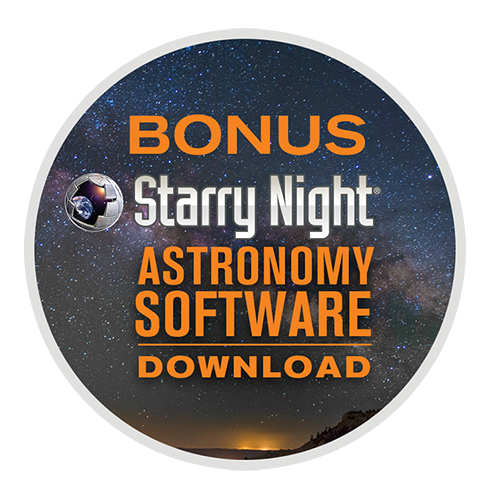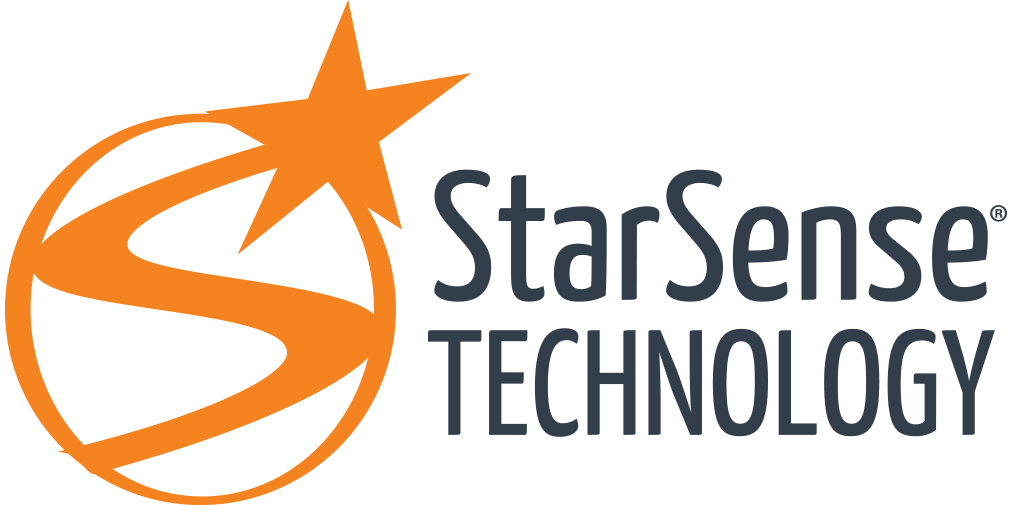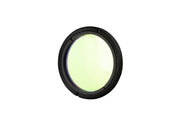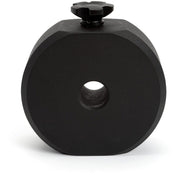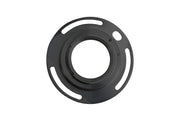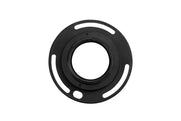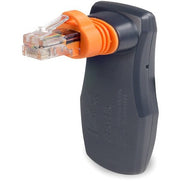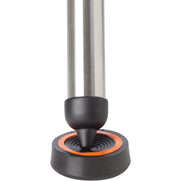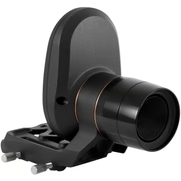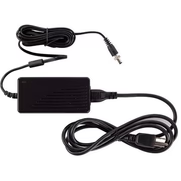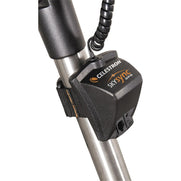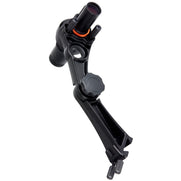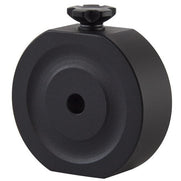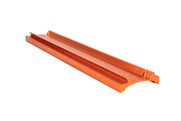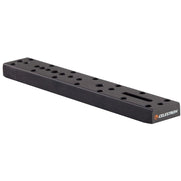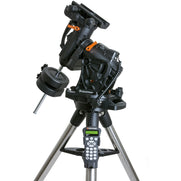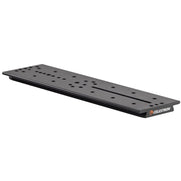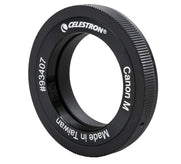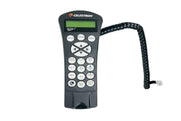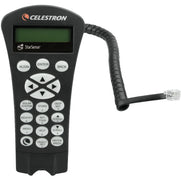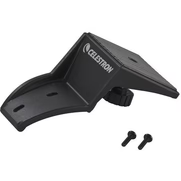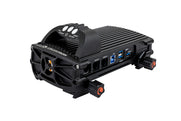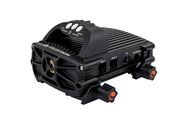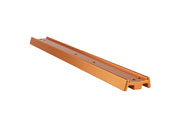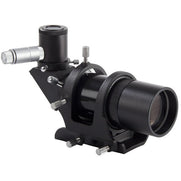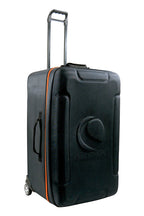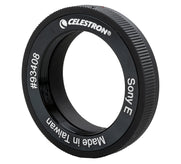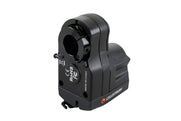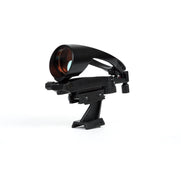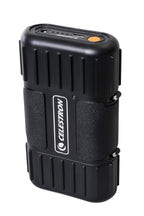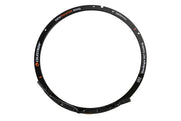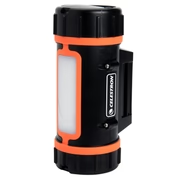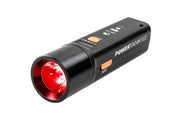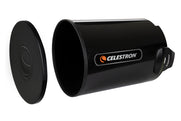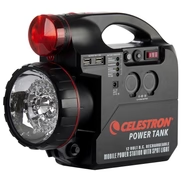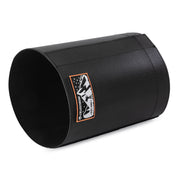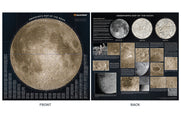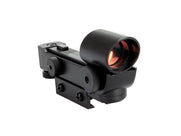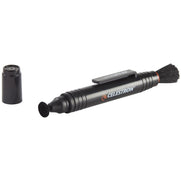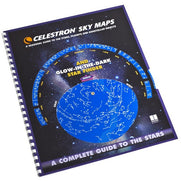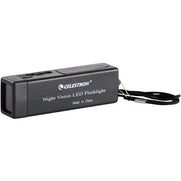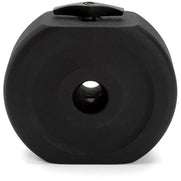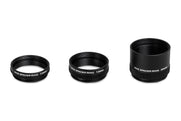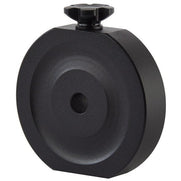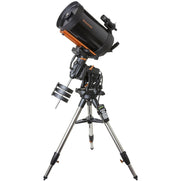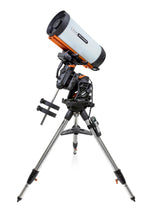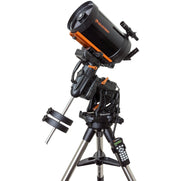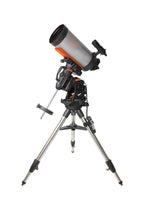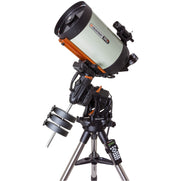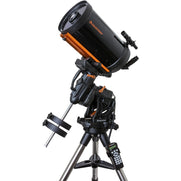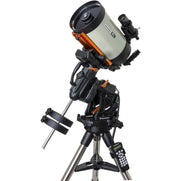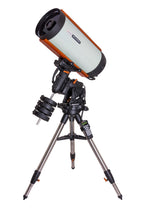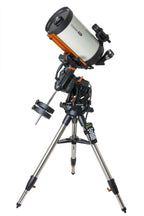CGX 8" Rowe-Ackermann Schmidt Astrograph (RASA) Telescope
$4,799.00
Backordered- Flat-field free of optical aberrations like field curvature, coma, astigmatism and chromatic aberration across an entire APS-C sensor.
- Unlike the larger RASAs that work with DSLR and large CCD cameras, the 8” model was designed with color astronomical CMOS cameras, smaller CCD cameras, and mirrorless cameras in mind. The telescope does not work with standard DSLR cameras.
- Ultra-Stable Focus System – precision linear ball bearing virtually eliminates image shift.
- Internal filter mount – seamlessly accommodates a Light Pollution Imaging Filter into the optical path.
- Performs over a wider spectral range than most telescopes, from 400-800 nm, so more of the light passing through the astrograph is in sharp focus.
- The CGX, with its 55 lb load capacity, is Celestron’s most innovative, state-of-the art, computerized equatorial mount to date, and provides a very sturdy and rigid platform for the fully-loaded RASA 8.
- The drive system utilizes low cog DC Servo motors with integrated optical encoders, belt and pulley motor connection, spring-loaded steel worm gears supported by precision sealed bearings, and brass worm wheels for smooth, accurate slewing and tracking performance with little backlash.
- Fully remote imaging capable, with optical limit switches, home sensors, through-mount cabling, and hard stops.
- Included Celestron PWI software allows direct computer control via USB 2.0 connection.
- Proven NexStar+ computerized telescope control technology supports functions to address imagers’ needs, such as All-Star Polar Alignment, Permanent Periodic Error Correction (PPEC), and adjustable tracking through meridian.
Overview
- Flat-field free of optical aberrations like field curvature, coma, astigmatism and chromatic aberration across an entire APS-C sensor.
- Unlike the larger RASAs that work with DSLR and large CCD cameras, the 8” model was designed with color astronomical CMOS cameras, smaller CCD cameras, and mirrorless cameras in mind. The telescope does not work with standard DSLR cameras.
- Ultra-Stable Focus System – precision linear ball bearing virtually eliminates image shift.
- Internal filter mount – seamlessly accommodates a Light Pollution Imaging Filter into the optical path.
- Performs over a wider spectral range than most telescopes, from 400-800 nm, so more of the light passing through the astrograph is in sharp focus.
- The CGX, with its 55 lb load capacity, is Celestron’s most innovative, state-of-the art, computerized equatorial mount to date, and provides a very sturdy and rigid platform for the fully-loaded RASA 8.
- The drive system utilizes low cog DC Servo motors with integrated optical encoders, belt and pulley motor connection, spring-loaded steel worm gears supported by precision sealed bearings, and brass worm wheels for smooth, accurate slewing and tracking performance with little backlash.
- Fully remote imaging capable, with optical limit switches, home sensors, through-mount cabling, and hard stops.
- Included Celestron PWI software allows direct computer control via USB 2.0 connection.
- Proven NexStar+ computerized telescope control technology supports functions to address imagers’ needs, such as All-Star Polar Alignment, Permanent Periodic Error Correction (PPEC), and adjustable tracking through meridian.
Description
This kit combines the 8” Rowe-Ackermann Schmidt Astrograph (RASA) with the state-of-the-art CGX German equatorial mount. Simply add a camera and this package offers everything you need to take spectacular images of wide-field deep sky objects. Although about the same size as the CGEM II, the CGX is a big step up in performance and features, especially for imaging applications.
RASA Performance Made for Everyone
Capture spectacular wide-field deep sky images in seconds with Celestron’s portable astrograph, the 8” Rowe-Ackermann Schmidt Astrograph (RASA). This incredibly fast f/2.0 system is the perfect companion to today’s color astronomical CMOS cameras, smaller CCD cameras, and mirrorless cameras. Thanks to its fast focal ratio and patented optical design, you can produce sharp, detailed images and, in many cases, skip the autoguider completely. Weighing in at just 17 pounds, it’s easy to transport your 8” RASA to the most remote dark sky locations.
The 8” RASA is an imaging telescope that delivers a flat-field without optical aberrations for razor sharp stars across a wide field-of-view. It can capture stunning deep-sky astronomical images without the challenges typically presented by longer focal length instruments at a fraction of the cost of those systems.
The latest addition to the RASA family, this 8” version is a much more portable and affordable version of the heralded RASA 11, which was introduced to much acclaim in 2014. With the 8” RASA joining the lineup, a wider range of astroimagers can enjoy the benefits of the RASA design. It has many of the same thoughtfully designed features as its “big brother” RASA 11, including the integrated air-cooling system, internal filter mount, and sturdy CGE dovetail mounting bar.
Purely designed for imaging, the 8” RASA cannot be used visually. The prime focus focal plane is located at the front of the optical system, so it cannot accommodate a traditional eyepiece.
Shorter Exposure Times and Virtual “Real-Time” Observing
Since it is an F/2.0 optical system, imagers can use shorter exposure times to capture detail in faint objects. When combined with sensitive cameras and the proper “live stacking” software, the 8” RASA can provide an almost real-time observing experience. View images on a computer instantly that are brighter and more detailed than can be seen in much bigger telescopes with the naked eye.
Ultra-Stable Focus System
With the launch of the 8” RASA, Celestron is unveiling a focuser design that mitigates lateral movement of the primary mirror when focusing, slewing, or tracking with the astrograph. Focusing is easier, more accurate, and more stable than ever. The key to the Ultra-Stable Focus System is a precision linear ball bearing, which is tested during assembly to ensure optimal results.
Built for Today’s Latest Cameras
Unlike the larger RASAs that work with DSLR and large CCD cameras, the 8” model was designed with color astronomical CMOS cameras, smaller CCD cameras, and mirrorless cameras in mind. The telescope does not work with standard DSLR cameras. It is optimized for sensors with up to a 22mm diagonal, but performs well with sensors up to 32mm diagonal. The APS-C sized sensors used in many mirrorless cameras are a good choice. 42mm full frame sensors will also work, but performance will be poor at the edges of the sensor and field illumination will be reduced. Additionally, we do not recommend pairing RASA 8 with any camera body more than 4” in diameter. See the chart below to determine if your camera is compatible with RASA 8.
| Camera | Compatible with RASA 8? | Adapter required |
|---|---|---|
| Astronomical CMOS/CCD camera with C-mount | Yes | C-mount adapter (included) |
| Astronomical CMOS/CCD camera with M42-thread mount | Yes | M42 adapter (included) with M42 extension tubes (not included) |
| Astronomical CMOS/CCD camera with other mount | Yes | Custom camera adapter |
| Canon mirrorless with APS-C sensor | Yes |
(sold separately) |
| Sony mirrorless with APS-C sensor | Yes |
(sold separately) |
| Canon mirrorless with full frame (42mm) sensor | Yes, but not optimized across the full sensor |
(sold separately) |
| Sony mirrorless with full frame (42mm) sensor | Yes, but not optimized across the full sensor |
(sold separately) |
| DSLR | No | -- |
Unique Optical Design
RASA’s optical design is patented (US 2016/0299331 A1). The design consists of a Schmidt corrector, primary mirror, lens group, and optical window. The lens group contains 4-elements and utilizes rare-earth elements. Unlike many telescopes that only perform well over the visible spectrum (400-700nm), the 8” RASA’s optics are designed to perform over a wider spectral range, from 400-800nm. This allows more of the light emitted from the astronomical object to be sharply focused in the image.
With many imaging systems, adding an extra piece of flat glass such as a filter does not change optical performance. However, that is not the case with super-fast optical systems like the RASA. Our engineers addressed this by designing the RASA with a removeable optical window, so you can maintain peak optical performance if a filter is added or if a camera has its own optical window. Celestron offers a Light Pollution Imaging Filter designed specifically for the 8” RASA, which mounts in place of the optical window.
All refractive optical surfaces are coated with StarBright XLT coatings, while the primary mirror uses enhanced aluminum coatings. This maintains high light transmission through the entire optical system.
When compared with “Hyperstar SCT” systems, the RASA 8 provides better optical performance and field illumination.
CGX: The Ideal Platform for RASA
The CGX is the culmination of Celestron engineers’ decades of experience in equatorial mount design, incorporating feedback from imagers worldwide. Combined with the RASA 8, it is a state-of-the-art deep-sky astronomical imaging system.
The CGX is an incredibly sturdy equatorial mount which rigidly supports the RASA 8. The mount was designed more compactly, so the instrument load is held closer to the R.A. axis, thus reducing torque from the load. It was also designed using FEA (Finite Element Analysis) software, which helped to optimize the stout structure of the mount. As a result, the CGX can support more weight than other mounts with similar mass. With its 55 lb load capacity, it can easily handle the RASA 8, which weighs only 17 lbs., along with a camera and any accessories. Expect a vibration-free setup, even in somewhat windy conditions. The RASA 8 connects directly to the CGX with its CGE dovetail mounting bar.
The heavy-duty adjustable height tripod has 2” diameter steel tripod legs with an extra-wide stance for improved stability. Graduated markings on the tripod legs make it easy to extend them to the same height and level the tripod.
The mount is packed with functionality and conveniences that make imaging with the 8” RASA easy. The fully computerized mount will automatically “GoTo” any of the 40,000+ astronomical objects selected from the NexStar+ hand controller’s database and automatically track the object as it appears to move across the night sky.
Designed with imaging in mind, the CGX motor drive system builds upon learnings from previous generations of mounts. You can trust CGX to accurately track during an exposure. At the heart of the system are low cog DC servo motors with integrated optical encoders. The low cog design helps the motors run smoothly, while the integrated optical encoders provide accuracy. The motors connect to the worm gears with a belt-and-pulley system (instead of spur gears) to reduce gear backlash when the motor changes directions. The steel worm gears are supported by precision bearings and spring-loaded against a brass worm wheel, which also helps ensure a smoothly operating drive system with minimal backlash and no binding.
To track objects in the night sky, the mount must first be polar-aligned. Celestron makes this process easier than ever with the innovative All-Star Polar Alignment procedure. No extra equipment, such as a polar finder scope, is required. (An optional polar alignment finder scope is available if desired.) Best of all, the alignment can usually be completed in about 15 minutes, even without a clear view of Polaris.
All mounts have some amount of “periodic tracking error” inherent in them caused by tiny gear imperfections. To mitigate this, the CGX has Permanent Periodic Error Correction (PPEC). This allows you to run a routine to record the periodic errors only once; the recording is kept in memory, and subsequently corrects for the mount’s periodic tracking error. If an even higher level of tracking accuracy is desired, the CGX also has a dedicated autoguider port to connect an autoguiding camera directly to the mount to correct for any residual tracking errors.
Conditions for imaging are best when celestial objects are at their highest point in the sky with the darkest background, called the meridian. But some German equatorial mounts have trouble tracking near the meridian because they need to perform a “meridian flip,” readjusting their position to avoid the tube striking the mount. CGX does not suffer from this problem, imaging through the meridian with ease and not requiring a meridian flip until the object is a full 20° past the meridian.
The NexStar+ also has dozens of other functions to control every aspect of the mount’s behavior. These include:
- Multiple ways to align the mount to the night sky
- Adjustable slew rates up to 5°/second
- Northern or Southern hemisphere compatibility
- Adjustable autoguiding rates
- Hibernate mode so the mount can be powered down without loss of alignment
- Continual firmware development, with new features added regularly
In addition to the autoguider port, the CGX also has other ports to enhance and expand the capabilities of the mount. The hand controller has a USB 2.0 port for those who wish to control the mount with an external computer and optional third-party software (see “Ready for Remote Imaging” section below). There are also 2 AUX ports on the mount that can support optional accessories such as StarSense AutoAlign.
Transporting the entire system to a dark site is extremely manageable, even for one person. The optical tube, mount head, tripod, counterweight bar, and counterweight all disassemble into separate pieces. The only tool ever required is a supplied hex key, which has a holder built into the mount, so you can’t lose or forget it. CGX also features two ergonomic carry handles that make carrying and setting up this heavy-duty mount much more comfortable. When it’s time to transport your mount, the tripod accessory tray “nests” into the legs when collapsed, stabilizing the tripod in your vehicle and ensuring that you don’t lose the tray.
Ready for Remote Imaging
Today’s imagers do not necessarily want to be near their telescope outside when they are capturing images. Rather, they would prefer to be indoors controlling the mount and camera with a computer, while the telescope is in the backyard, or even hundreds of miles away in a dark remote observing site. Not every mount is capable of remote observing operation, but the CGX was designed specifically with this in mind. Celestron’s engineers thought through every scenario that might occur in the field, since it’s very likely that no one will be around to immediately “rescue” a remote telescope if something unexpected occurs.
One of the most critical problems that can occur during remote operation is the optical tube inadvertently striking the mount. This will not only ruin an exposure and require realignment with the sky, but could also damage expensive equipment. This type of strike cannot happen with CGX because optical switches on each axis stop the motors before the astrograph can run into the mount, without loss of alignment.
Should power be somehow interrupted, the mount has “home position” optical switches that allow easy remote realignment of the mount. The mount’s cables are all wired internally through the mount, and all external inputs, including the power jack, are on a stationary section of the mount. This prevents cables from becoming snagged or tangled and unplugged as the astrograph is moving. The mount also has hard stops to physically limit the motion of the astrograph on each axis, preventing the internal cabling from being overly twisted or pulled and potentially failing. In addition, the hard stops provide a “fail safe” safety measure to protect the astrograph should the limit switches somehow fail. The power jack for the mount utilizes a threaded barrel connector, ensuring the power cable won’t become unplugged and cause the mount to lose power.
For remote imaging, the mount needs a way to be controlled by an external computer. The CGX has two ways to connect to a computer via USB 2.0. First, it has a USB port on the mount itself which is used exclusively to connect to a PC running the included Celestron PWI telescope control software. Developed in partnership with PlaneWave Instruments, the software has an intuitive graphical user interface and provides an excellent solution for remotely operating the mount. It incorporates multi-point mount modeling to provide the most accurate alignment of the mount to the sky possible. In addition, the included NexStar+ hand controller also has its own USB 2.0 port for computer connection; this can be used with optional third-party telescope control software by use of an ASCOM driver.
In summary, the CGX and RASA 8 together are a top-tier imaging system built for performance and ease of use. This kit is perfect for imaging in the backyard or at a remote dark sky site, whether you are near the telescope or on the other side of the globe.
Technology
CGX Mount and Tripod Features
- Sturdier and more rigid with quicker dampening time
- Increased load capacity to 55 lbs.
- Motors provide more torque, better slewing and tracking under heavy loads
- Heavy Duty belt-drive system minimizes backlash while providing smooth motor operation under heavy loads
- Spring-loaded brass worm wheel and stainless steel worm gear reduce friction and provide optimum gear mesh
- Internal cabling for worry-free remote operation. Power input and accessory ports remain stationary while the mount slews to avoid snags
- Internal hard stops for both axes prevents cable tension and tripod strike
- Internal optical sensors on both axes for simple and safe remote operation
- Home sensors allow the mount to always start in the index position regardless of orientation before a power reset
- Limit sensors automatically shut off slewing or tracking before reaching the hard stop fail safe
- Control software developed in conjunction with PlaneWave Instruments for professional level control operation and imaging
- Software includes multi-point mount modeling for extremely precise pointing accuracy and many more additional features for remote astroimaging
- Wider tripod stance for improved stability
- Adjustable EQ head position to optimize center of gravity over the tripod and fully utilize the increased 3°-65° latitude range
- Dual-fit CG-5/Vixen and CGE/Losmandy dovetail saddle




Tripod includes:
- 2" steel legs with height index marks for quick leveling
- "Jack of all trays" can hold three 1.25" eyepieces, two 2" eyepieces, your smartphone, or other accessories
- +20° of additional tracking past the meridian on either side
- Tripod legs can be collapsed with accessory tray installed for faster setup and transport

Ergonomics:
- Two handles for easy pickup and transport
- Ergonomically designed dovetail clamping knobs
- Innovative and improved polar alignment adjustment system
- Ergonomic latitude adjuster for smooth and easy adjustment under full loads
- Optional add-on polar axis finderscope


Electronics
- NexStar+ hand control with USB port
- Two AUX accessory ports to support wireless/WiFi alignment and operation with StarSense AutoAlign and SkyPortal WiFi Module accessories (sold separately)
- USB 2.0 port, used to connect directly to PC with included software
- Autoguider port
- PPEC ready
- Threaded 12VDC power input barrel connector
- Internal Real Time Clock (keeps time and site information saved
Specifications
| Optical Tube Info: | |
|---|---|
| Optical Design: | Rowe-Ackermann Schmidt Astrograph |
| Aperture: | 203mm (8") |
| Focal Length: | 400mm (15.74") |
| Focal Ratio: | f/2.0 |
| Central obstruction diameter: | 93mm (3.66") (46% of aperture diameter) |
| Light Gathering Power (Compared to human eye): | 843x |
| Resolution (Rayleigh): | 0.68 arc seconds |
| Resolution (Dawes): | 0.57 arc seconds |
| Image Circle: | 22mm (.86") Ø, 3.15° |
| Useable field: | 32mm (1.26") Ø, 4.6°, only minimal performance loss at edge of FOV |
| Wavelength range: | 400 - 800 nm |
| Spot size: | < 4.6 μm RMS across image circle |
| Optical Coatings: | StarBright XLT |
| Off-axis Illumination: | 93% at 11mm (.43") off-axis |
| Optical Window: | 46mm (1.81") Ø |
| Back focus with included camera adapter: | 25mm (.98") |
| Back focus from top of threaded collar: | 29mm (1.14") |
| Optical Tube: | Aluminum |
| Optical Tube Length: | 628mm (24.7") |
| Optical Tube Diameter: | 235mm (9.3") |
| Focuser: | Ultra-Stable Focusing System |
| Finderscope: | Not included |
| Optical Tube Weight: | 17 lbs (7.7 kg) |
| Other Features: | Air-cooling system, integrated filter mount |
| Included items: | M42 camera adapter | C-thread camera adapter | Fan battery pack |
| Dovetail: | CGE Dovetail Bar |
| Mount Info: | |
| Mount Type: | Computerized Equatorial |
| Instrument load capacity: | 55 lbs (25 kg) |
| Height adjustment range (includes mount and tripod): | 1200.15mm - 1968.5mm (47.25" - 77.5") |
| Tripod Leg Diameter: | 50.8mm (2") Steel tripod with graduated markings on lower section |
| Latitude adjustment range: | 3° - 65° |
| Mount Head Weight: | 44 lbs (20 kg) |
| Accessory Tray: | Yes |
| Tripod Weight: | 19.2 lbs (8.7 kg) |
| Weight of Counterweights: | 2 x 11 lbs |
| Slew Speeds: | 9 slew speeds - max speed 4°/second |
| Tracking Rates: | Sidereal, Solar and Lunar |
| Tracking Modes: | EQ North and EQ South |
| GPS: | N/A |
| Dovetail Compatibility: | Dual saddle plates (CG-5 and CGE saddle) |
| Number of Auxiliary Ports: | 2 AUX Ports (Hand Control can use either AUX Port) |
| Autoguide Port: | Yes |
| USB Port: | Yes, input for Mount and Hand Control |
| Power Requirements: | 12V DC, 4 amps |
| Motor Drive: | DC servo motors |
| Alignment Procedures: | 2-Star Align, 1-Star Align, Solar System Align, Last Alignment, Quick Align |
| Periodic Error Correction: | Yes |
| Computerized Hand Control: | 2 line x 18 character backlit Liquid Crystal Display, 19 LED backlit buttons, USB 2.0 Port for PC connection |
| NexStar+ Database: | 40,000+ objects, 100 user defined programmable objects. Enhanced information on over 200 objects |
| Software: | CPWI Telescope Control Software | Celestron Starry Night Special Edition Software | SkyPortal App |
| Total Kit Weight: | 124.2 lbs (56.3 kg) |
| Included Items: | CGX Equatorial Head | CGX Tripod | Accessory Tray | 2 x 11 lbs counterweights | NexStar+ Hand Control | 8mm Allen Wrench | 12V DC Power Cable | Hand Control Holster |
| Solar Warning |
|
| California Residents | View Proposition 65 Warning WARNING: Cancer and Reproductive Harm - www.P65Warnings.ca.gov. |
Videos
Reviews
Sky & Telescope’s Hot Products 2019 Award
"Incredibly fast optical speeds allow deep-sky imaging with short exposures, opening up a new world of scientific- and recreational-astrophotography possibilities."
Read Full ReviewFAQ
Why can’t the Rowe-Ackermann Schmidt Astrograph (RASA) 8 be used visually?
The optics produce an image at the front end of the telescope, not the back. Therefore, you cannot look through the RASA 8 with your eyes because your head will block the light from entering the telescope. The RASA 8 is an astrograph designed specifically for deep-sky astronomical imaging.
Why was the RASA 8 designed to have a camera mount at the front of the telescope?
The RASA 8 optical design uses a prime focus focal plane position in order to obtain its super-fast F/2.0 focal ratio. This necessitates the camera having to be mounted at the front of the astrograph.
Won’t the camera block the incoming light?
The RASA 8 optical design has its own central obstruction which is caused by the sub-aperture lens assembly at the front of the telescope. The lens assembly has an outer diameter of 93mm. If a camera’s body is smaller than this, it will not block any light from reaching the camera sensor. If the camera body is larger than this, then it will block some of the incoming light. As long as the camera body does not greatly exceed about 120mm diameter, the effect on images is negligible.
What cameras can be used with the RASA 8?
The RASA 8 can be used with many astronomical CMOS and CCD cameras. It also works well with mirrorless digital cameras. Two key considerations are the size of the camera body (should not exceed about 120mm in diameter), and the camera’s backfocus distance (cannot exceed 25mm). Color or monochrome sensors can be used, although color sensors are easiest to use since the RASA 8 cannot accommodate a filter wheel (see question #7).
Why can’t a DSLR be used with the RASA 8?
The body size of a DSLR is too large compared to the front aperture of the RASA 8, and therefore blocks too much of the incoming light. Also, the DSLR requires too much backfocus (55mm) for the RASA 8, so the camera sensor cannot be placed at the required location relative to the astrograph. For DSLR imaging, we recommend the RASA 11.
What about camera cables in front of the optics?
Camera cables which cross the front of the RASA 8 do not block much light and, don’t have a significant effect on images. To minimize any potential diffraction spike around the brightest stars, camera cables can be positioned to cross the aperture in a curved pattern, rather than a straight line.
Will I need additional camera adapters for my camera?
It depends on what camera you are using. For cameras with a C-mount, no additional adapters are required. For cameras which mount with a 42mm thread, a 42mm (or T-thread) spacer ring to place the camera sensor at the proper backfocus distance relative to the optics will be needed. (Note: With the included 42mm camera adapter, the backfocus distance required is 25mm. So, subtract the backfocus distance specification for your camera from 25mm, and that is the length of the M42 spacer ring you will need. If the camera has a backfocus distance of more than 25mm, it cannot be used with the RASA 8.) For Sony and Canon mirrorless cameras, Celestron offers optional camera adapters. For other cameras, a custom camera adapter will be needed.
What is the difference between the image circle and the useable field?
The image circle is the diameter at the focal plane (i.e. where the camera sensor is positioned) which the astrograph’s performance was optimized for. The useable field is the diameter at the focal plane where the performance of the astrograph is excellent. Most astrographs only mention the useable field in their specifications.
What if my camera’s sensor is larger than the useable field?
The RASA 8 has a useable field of 32mm. A sensor with a diagonal size larger than that, such as a full-frame mirrorless camera, can be used, but there will be some drop off in optical performance and field illumination in the corners of the image. This may require cropping during image processing.
Can filters be used with the RASA 8?
The RASA 8 has a removeable optical window which can be replaced with a filter. Currently, Celestron offers a Light Pollution Reduction Filter for the RASA 8. Filter “sliders” offered by some manufacturers may also work with some cameras. A filter wheel cannot be used, since the filter wheel would have to mount in front of the optics and would block too much of the incoming light.
Why does the RASA 8 have a removeable optical window?
With such a fast optical system, you cannot add a filter into the light path without adversely affecting the optical performance. With a removeable optical window, you can replace the window with a filter with no loss of performance.
Why is the fast focal ratio (F/2.0) of the RASA 8 such a big deal?
Because it allows much shorter exposures to be used to capture detail in fainter astronomical objects. This makes getting good images much easier and quicker. With a sensitive high-speed camera along with live image stacking software, you can see images in “real-time” on your computer screen.
What mounts can be used with the RASA 8?
Any mount which can accept a CGE (or Losmandy D) dovetail bar and can handle at least 20 lbs. The RASA 8 weighs 17 lbs, and you’ll also need to account for the weight of your camera and any other accessories.
Will I need to collimate (i.e. align) the optics?
The optics are aligned at the factory, and should not normally need adjustment. However, there are screws which adjust the tilt of the lens assembly should collimation adjustment ever be needed.
What is focus shift, and how does the Ultra-Stable Focus System (USFS) help to minimize it?
Focus shift is when the image in your camera moves a little bit when focusing. This can make critical focusing more challenging. The RASA 8 focuses by moving the primary mirror inward-and-outward. If the mirror moves at all laterally, then focus shift will result. The USFS works using a precision linear ball bearing on the shaft that supports the primary mirror. This constrains any lateral motion of the primary mirror and minimizes focus shift. This also helps prevent any unwanted lateral motion of the primary mirror (also known as “mirror flop”) as the astrograph is pointed to different positions in the night sky.
What is the extended spectral range (400-800 nm) and what is the benefit?
Most telescopes are designed to perform well over the visual spectrum (i.e 400-700nm). The RASA 8 optics were designed to perform over a wider spectral range, from 400-800nm. This means that light from 700nm-800nm will be well focused in the RASA 8, allowing more of the light emitted from the astronomical object to be sharply focused in the image. For cameras which have spectral response in the 700-800nm range, you’ll get brighter and sharper images and won’t necessarily need to use an IR-cut filter.
What else might be needed with the RASA 8?
A finderscope can be useful for visually finding objects or for initial alignment of your computerized mount with the night sky. The RASA 8 has mounting holes for a finderscope. If doing longer exposures, you may want to consider using a guide scope and autoguider in order to provide the best tracking performance with your mount. For convenient mounting of a guide scope, Celestron offers a CGE dovetail accessory mounting bar which connects to the top of the RASA 8 and allows easy installation of guide scope rings. Perhaps the most useful accessory is a focus motor, this permits focusing from the computer which is controlling the camera and/or mount. A focus motor which is compatible with the RASA 8 will soon be introduced by Celestron.
What is the purpose of the integrated air-cooling system?
The RASA 8 will perform the best when its optics have reached thermal equilibrium with the outside air. The cooling system uses a fan and vents to pull air through the astrograph and around the primary mirror in order to help the RASA 8 reach thermal equilibrium more quickly.
What is the difference between RASA 8 and an 8” SCT or EdgeHD using the Starizona Hyperstar accessory?
The RASA 8 provides better optical performance and better field illumination than an 8" SCT or Edge HD with a Hyperstar accessory. The Hyperstar accessory provides great flexibility for an SCT or EdgeHD optical system, as it allows the telescope to be used at two different focal lengths. When imaging at F/2.0 however, it cannot provide the performance of the RASA 8.
What about dew?
Just like any telescope design which uses a lens at the front of the telescope, the RASA 8 Schmidt corrector lens can be susceptible to dew under certain environmental conditions. To prevent dew when the outside temperature drops below the dew point, we recommend using a dew shield or dew heater.
What is the heaviest recommend load for mounting a camera onto the RASA 8?
We recommend a load of no more than 20 lbs. at 4.5 inches away from the 8" Schmidt corrector.
Why is there a black ring around the edge of the primary mirror in my RASA 8 V2??
The very edge of the primary mirror is opaque black to ensure best image quality. The optical quality at the very edge of any primary mirror is generally not quite as good as the rest of the surface due to manufacturing processes. This “edge blackening” eliminates this region of the mirror, and is not uncommon for larger primary mirrors, especially those with a fast focal ratio. The RASA 8 optical design is affected by this more than other Celestron models due to its very fast focal ratio (F/2.0), hence the decision to incorporate edge blackening for this model only.
Support & Downloads
Reviews
There are currently no customer reviews.

